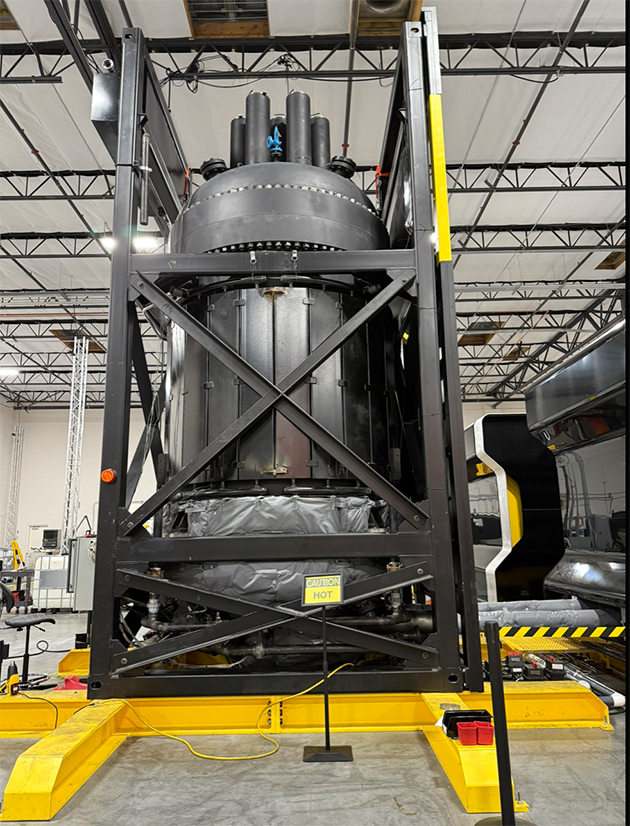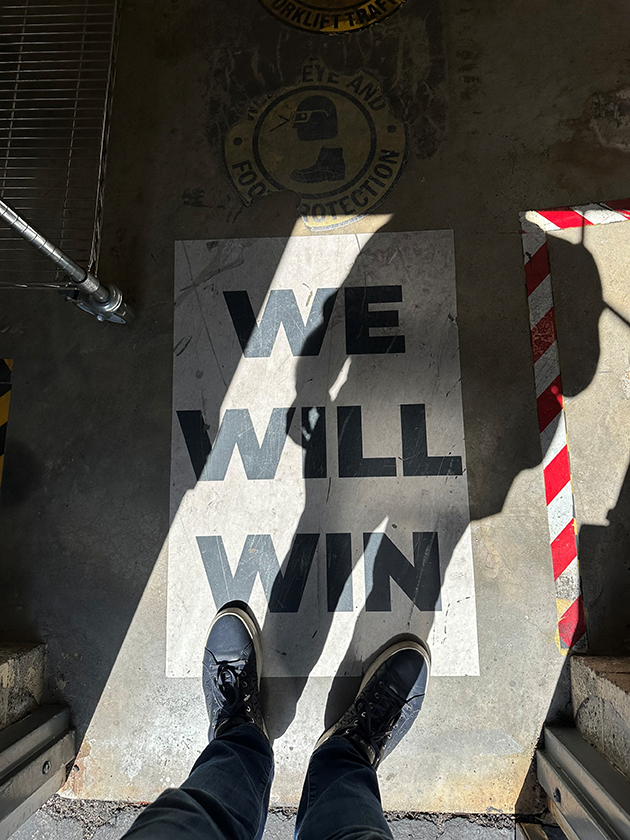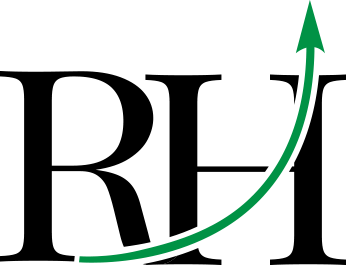“Red Bull?”
Usually we’re offered water before a meeting. Valar Atomics’ secretary offered us a Red Bull at 4pm. Says everything you need to know about the energy in El Segundo, CA.
This place is special, the next Silicon Valley. I’m convinced the next trillion-dollar companies are hatching here.
El Segundo is named after Standard Oil’s “second” oil refinery, now owned by Chevron. It is massive — the west coast’s largest refinery. RiskHedge co-founder Dan Steinhart and I went on a run around its 6-mile perimeter. It still pumps out 300,000 barrels a day.
I’m sure conservationists would love to shut this thing down. So would many of the hard-tech founders we met… but for different reasons. These guys want to make the old ways of making energy obsolete.
Valar Atomics makes small nuclear reactors (SMRs). But instead of simply generating electricity, it will use the energy to pull carbon out of the air and produce synthetic oil and gas.
This would turn oil into a renewable resource.
Why this audacious business model? Old school nuclear is massive, 500+ acre plants surrounded by concrete. Nuclear 2.0 is small, safe, school bus-sized reactors that can power a town. We already have this technology. Valar’s prototype is ready to turn on. The only thing standing in the way is regulation.
The biggest hurdles are the regulations policing potential nuclear reactor sites. It is extremely hard, slow, and expensive to pass the environmental review needed to establish a new nuclear site. Mindbogglingly, SMRs are subject to the same site regulations as old school massive nuke plants.
SMRs are meant to dramatically reduce the cost and time to get a new nuclear reactor up and running. But under current regulations, they make nuclear’s cost problem worse — because each SMR needs to sit somewhere.
Valar’s solution is to put hundreds of SMRs in one place — hundreds of identical small reactors clustered on a single “gigasite.” Not one behemoth, but an army of identical twins working in harmony.
A gigasite will produce far more energy than could possibly be used in one location — even by a huge energy-hungry data center. The energy must be stored. Battery technology is nowhere good enough yet. So, Valar is going to store the energy in oil and gas.
We met Valar’s founder Isaiah Taylor upstairs in his cigar lounge.
Leather armchairs anchor the room. Four enormous classical paintings span the wall. Columbus sighting land, Pilgrims stepping off the Mayflower, the signing of the Declaration, and the Constitutional Convention. This is a startup built on American ambition.
At age 25, Isaiah recently welcomed his fourth child. I thought I was crushing it with three kids by 30. But Taylor operates at a different velocity, chasing his mission “to make the world’s energy.” It’s in his DNA. His great-grandfather built the first nuclear reactor at Oak Ridge in 1943.
That original reactor went from blueprint to completion in just nine months. Isaiah is determined to match that wartime urgency in peacetime.
 Source: Isaiah Taylor on X
Source: Isaiah Taylor on X
Ward Schaap, Isaiah’s great-grandfather and namesake of Valar’s Ward Zero
Downstairs, he shows us Ward Zero, Valar’s first reactor prototype. With just seven moving parts, it looks more like a sleek industrial water heater than the complex nuclear beasts of previous generations. The inside is beautiful. It looks like a video game studio, complete with high-def screens and neon yellow lights.
The reactor is ready to turn on. Again, the only thing standing in the way is regulation.
 Ward Zero at Valar Atomics
Ward Zero at Valar Atomics
This place is a good reminder that: The bedrock of prosperity is abundant energy.
Valar bets nuclear will deliver it. Casey Handmer thinks otherwise.
Terraform is making natural gas from sunshine, water, and air.
Casey talks fast, like someone who knows there isn’t enough time in the day to explain all the ideas ricocheting around his brain. I first met Casey, founder of Terraform Industries, in Berkeley last October. This time I visited him at his Castle-shaped factory in Burbank, next-door to Walt Disney’s original studio.
Terraform is making natural gas from sunshine, water, and air. Its machine, the Terraformer, is a portable chemical plant powered by solar panels. No drilling. No pipelines stretching across continents. It’s essentially a bottomless energy well powered by the sun.
Casey used to work at NASA. One day he was doing calculations to figure out how to build a city on Mars. He realized the tech he was working on could solve Earth’s biggest problems.
“We don’t need to rebuild civilization from scratch,” Casey explained over lunch. “The world already runs on hydrocarbons. We just need to make them differently.”
Terraform’s initial goal is to make jet fuel, to power supersonic flight, from air. His “Terraformer” machine is roughly the size of two shipping containers and works like a reverse power plant. Sunlight and air go in one end, and cheap natural gas comes out the other.
“Solar cells are panes of glass that print wealth. By 2040, 95% of our energy will come from solar powered sources,” he says with total conviction. Who am I to disagree?
As our lunch wrapped up, Casey was already three topics ahead. He detailed how Terraform’s technology could eventually pair with desalination to turn barren deserts green, a true terraforming of Earth’s wastelands.
I love Casey’s vision for the future. Saudi Arabia without the drilling. Texas without the oil rigs.
The entrance to Terraform’s lab reads “WE WILL WIN.”
 Visiting Terraform
Visiting Terraform
This is just a taste of the startups we met. In Gundo you literally stumble upon innovation. Walking to meet the founder of AnySignal, we pushed through the wrong door into Rainmaker’s lab, where modern-day rain shamans are attempting to squeeze water from the sky.
Rainmaker is revolutionizing cloud seeding, the technique that makes clouds rain on demand.
Imagine pre-emptively moistening wildfire-prone areas in California before blazes can start. Picture Phoenix transforming into an oasis, complete with lakefront property where worthless sand once baked under the sun.
Where else can you randomly stumble upon a rain god?
Lessons from Gundo’s entrepreneurs
#1: Follow the SpaceX Mafia.
The PayPal Mafia (Musk, Thiel, Levchin, Hoffman) went on to build companies like Tesla, SpaceX, LinkedIn, Palantir, and Affirm. These ventures generated trillions of dollars in wealth for everyone involved.
The group to watch now is the SpaceX Mafia. SpaceX is the world’s most valuable private company, valued around $350 billion today. The ventures its alumni create, focused on atoms, energy, defense, and space, will dwarf that figure.
SpaceX’s nearby headquarters in Hawthorne employs 10,000 people. SpaceX alumni are everywhere in Gundo. They all graduated from the School of Elon Musk, imbued with a culture of rapid iteration and the motivation to achieve difficult goals.
#2: Audacity.
I’m convinced these startups are vying for the most audacious goal. Build the world’s largest nuclear power site. Turn air into jet fuel. Rain on demand.
It’s no surprise people from all over the country (and the world) move to Gundo. “Hey kid, wanna build rockets two miles from the beach?”
#3: Beauty.
Michael Smayda, co-founder of hypersonic startup Hermeus, worked for Elon Musk as one of the lead designers on SpaceX’s Falcon Heavy rocket. Elon demanded the engines be a shiny metallic color. This created engineering challenges and served no purpose other than to look cool.
But Elon understood the importance of building beautiful, inspirational things. That’s how you attract smart kids raised on software back to the world of atoms.
#4: Agency.
The world gets better not by accident, but because determined people are making it happen.
The vibe in Gundo is: If the tools don’t exist, build them. If the process is broken, reinvent it. Many founders here are high school or college dropouts.
You’ll see them on the cover of Forbes magazine someday. But you heard about them from us first.
#5 Bonus: Buy Gundo real estate.
There’s a joke that most venture capitalists waste their time betting on longshot startups when they could’ve simply bought Nvidia stock and made more money.
I left El Segundo bullish on many of the founders I met. But the no brainer way to profit from America’s hard tech renaissance is to buy a condo in Gundo. Think of it like “buying the index.”
Silicon Valley was the most important place on Earth over the past two decades during the software-dominated bull market. El Segundo is becoming the most important small city in America as we head into the hardware and defense boom.
Trillion-dollar companies will be built here.
If you liked this, consider joining my twice-a-week investing letter The Jolt, where I write about today’s biggest disruptions and tech innovations from an investing standpoint.

